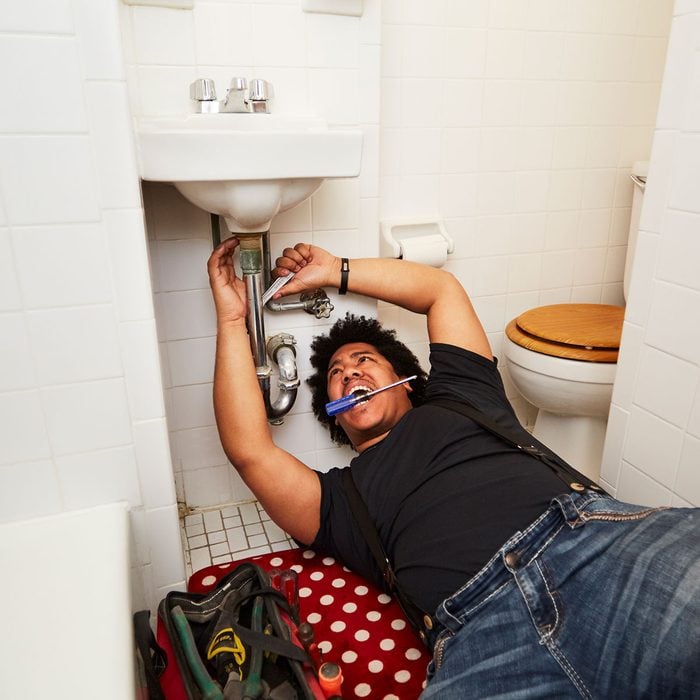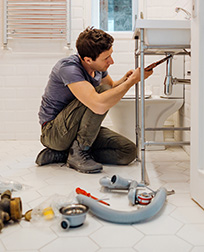A Detailed Overview to Effective Hot Water Heater Setup for Optimal Efficiency
Embarking on the task of mounting a water heater is a venture that requires accuracy and a systematic technique for achieving optimum performance. As you proceed, the ins and outs of attaching water supply lines and setting up trustworthy electric or gas connections await, promising insights into making sure performance and reliability.
Selecting the Right Hot Water Heater

Next, consider the size and capability of the water heating system. It's vital to evaluate your home's warm water demands, which can differ based on the variety of owners and their use patterns. An unit that's too small may result in inadequate warm water, while a large version might result in unnecessary energy consumption.
Efficiency ratings also play a critical role in selection. Search for hot water heater with high Power Aspect (EF) scores, suggesting remarkable efficiency and minimized energy usage. Tankless models, though generally a lot more pricey in advance, offer substantial energy financial savings with time as a result of their on-demand home heating abilities.
Preparing the Installation Area
Prior to setting up a brand-new water heater, careful prep work of the installment location is necessary. It's essential to gauge the room meticulously to accommodate the water heater's measurements, making certain adequate clearance around the device for efficient procedure and servicing.
Next, get rid of any type of debris, dirt, or blockages from the website to develop a tidy setting. Inspect the floor for stability, as the hot water heater will certainly need a strong, degree surface area to run effectively. If required, mount a drip frying pan underneath the system to catch potential leakages or spills, preventing water damage to the surrounding area. In regions susceptible to seismic activity, think about installing seismic straps to protect the heating unit strongly in position.
Additionally, make sure that all essential devices and materials are on hand prior to commencing the installation. This consists of products such as wrenches, screwdrivers, a level, and any type of added equipment needed for mounting and safeguarding the heating system. A well-prepared installment area establishes the structure for an effective hot water heater setup, enhancing performance and safety.
Connecting Water Lines
When linking supply of water lines to your recently installed hot water heater, it is important to guarantee that all links are leak-free and safe and secure to keep reliable operation and protect against water damage. Begin by determining the hot and chilly water supply lines. The cool water inlet is commonly noted with a blue tag or a "C", while the warm water electrical outlet is marked with a red label or an "H".
Usage adaptable water heating system ports to assist in a much easier setup procedure. Prior to connecting the ports, position a plumbing technician's tape around the threaded ends of the water heating system's inlet and electrical outlet pipes.
Once links are in area, slowly activate the primary supply of water valve. Check each link for leakages by visually checking and really feeling for moisture. Tighten connections as required, and ensure the pressure alleviation valve is correctly mounted, protecting versus excessive stress accumulation.
Establishing Electrical or Gas Connections
Effectively setting up the electrical or gas links for your hot water heater is an essential step to make sure secure and efficient procedure. For electrical hot water heater, start by confirming that the electrical circuit works with the heating unit's voltage and amperage requirements. Guarantee the power supply is shut off at the circuit breaker Read More Here to avoid crashes. Connect the electrical cords to the heating unit following the supplier's electrical wiring representation. Generally, this entails attaching the ground cable to the eco-friendly terminal, and the staying cords to their corresponding terminals, securing each with wire nuts.
For gas water heating systems, security is critical. Validate that the gas supply is off before continuing. Link the gas line to the hot water heater using an adaptable gas adapter, guaranteeing it is effectively threaded and sealed with pipe joint substance or Teflon tape appropriate for gas connections. Tighten the links with a wrench, taking treatment not to over-tighten (Plumber Alabaster AL).
Once links are made, examine for any type of prospective leakages. For gas lines, apply a soapy water remedy to the joints; bubbles indicate a leak. For electric links, confirm that all wiring is secure and appropriately shielded, preserving conformity with regional electrical codes.
Changing and checking for Effectiveness
With the electrical and gas links securely in location, the following action is assessing the operational effectiveness of your water heating unit. Begin by meticulously transforming on the water supply and ensuring there are no leakages at any of the valves or joints.
Following, execute a detailed inspection to guarantee the heating aspects or gas burners are working correctly. For electric heaters, utilize a multimeter to confirm if the components are attracting the proper existing. In gas versions, observe go the burner fire; it should be stable and blue, suggesting effective burning.
Adjust the settings as needed to get rid of ineffectiveness. Think about applying insulation procedures, such as adding a water heating system blanket, to even more enhance efficiency by lessening warmth loss. In addition, check the anode pole's problem, as a scrubby pole can lower performance and result in container corrosion.
Verdict
Reliable hot water heater installment is crucial for making sure optimum performance and power cost savings. By picking the suitable type and size, and carefully preparing the installation area, a foundation for success is developed. Safely attaching water system lines and meticulously setting up electrical or gas try this links decrease potential issues. Detailed testing for leaks and accurate thermostat changes to 120 ° F enhance reliability and effectiveness. Complying with these steps promotes long-term performance and power preservation in residential water heating systems.

Properly setting up the electrical or gas connections for your water heating system is an essential step to guarantee reliable and safe operation. For electric water heating systems, start by confirming that the electric circuit is suitable with the heater's voltage and amperage requirements. Connect the gas line to the water heater using a flexible gas adapter, ensuring it is appropriately threaded and secured with pipeline joint compound or Teflon tape appropriate for gas links.